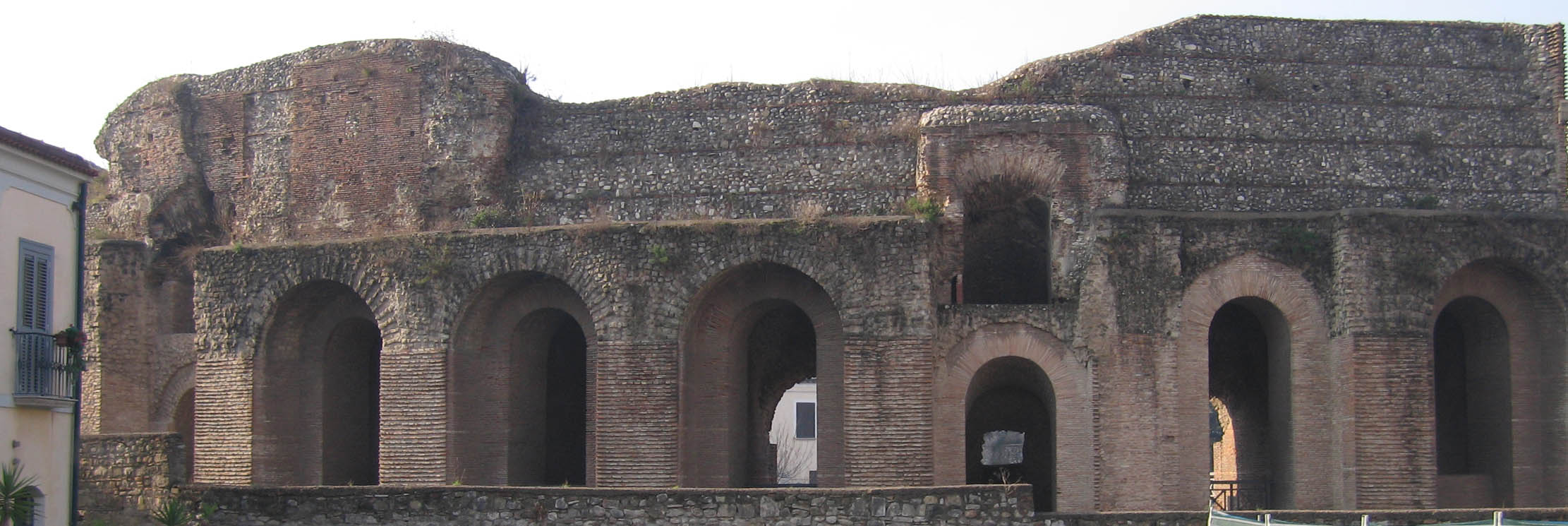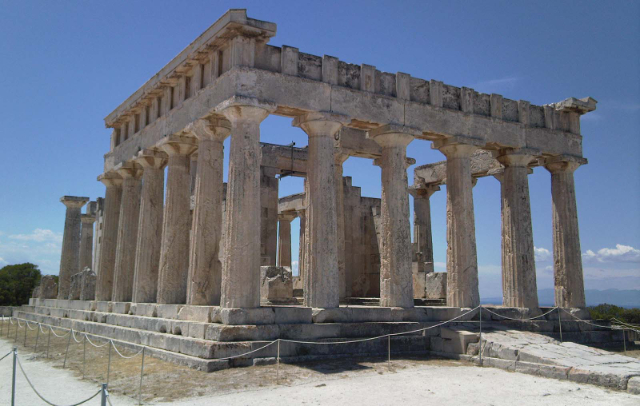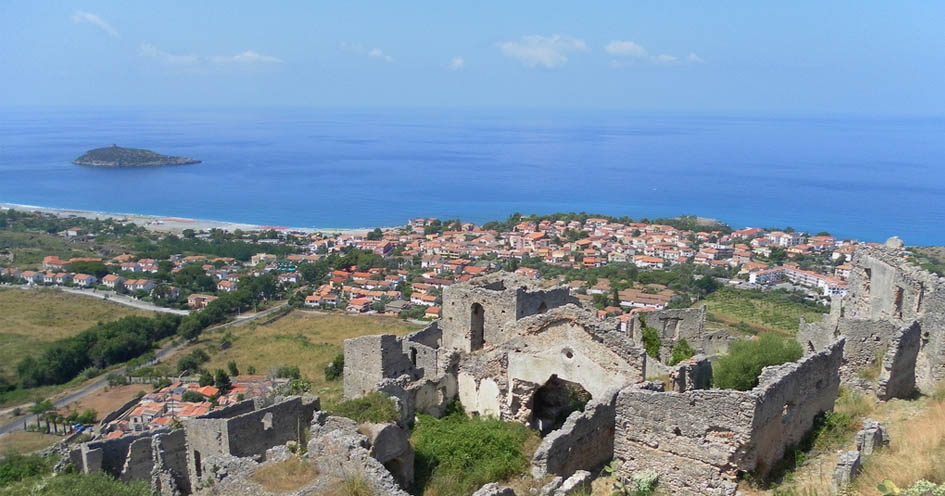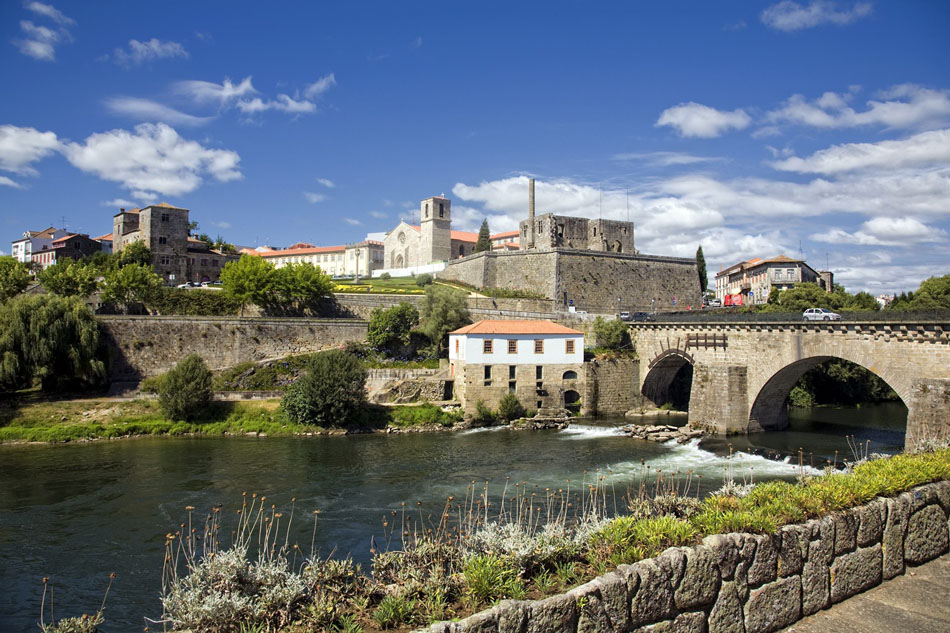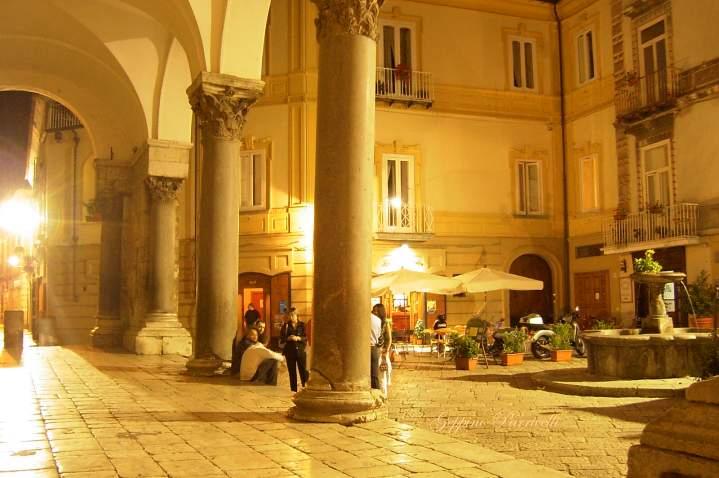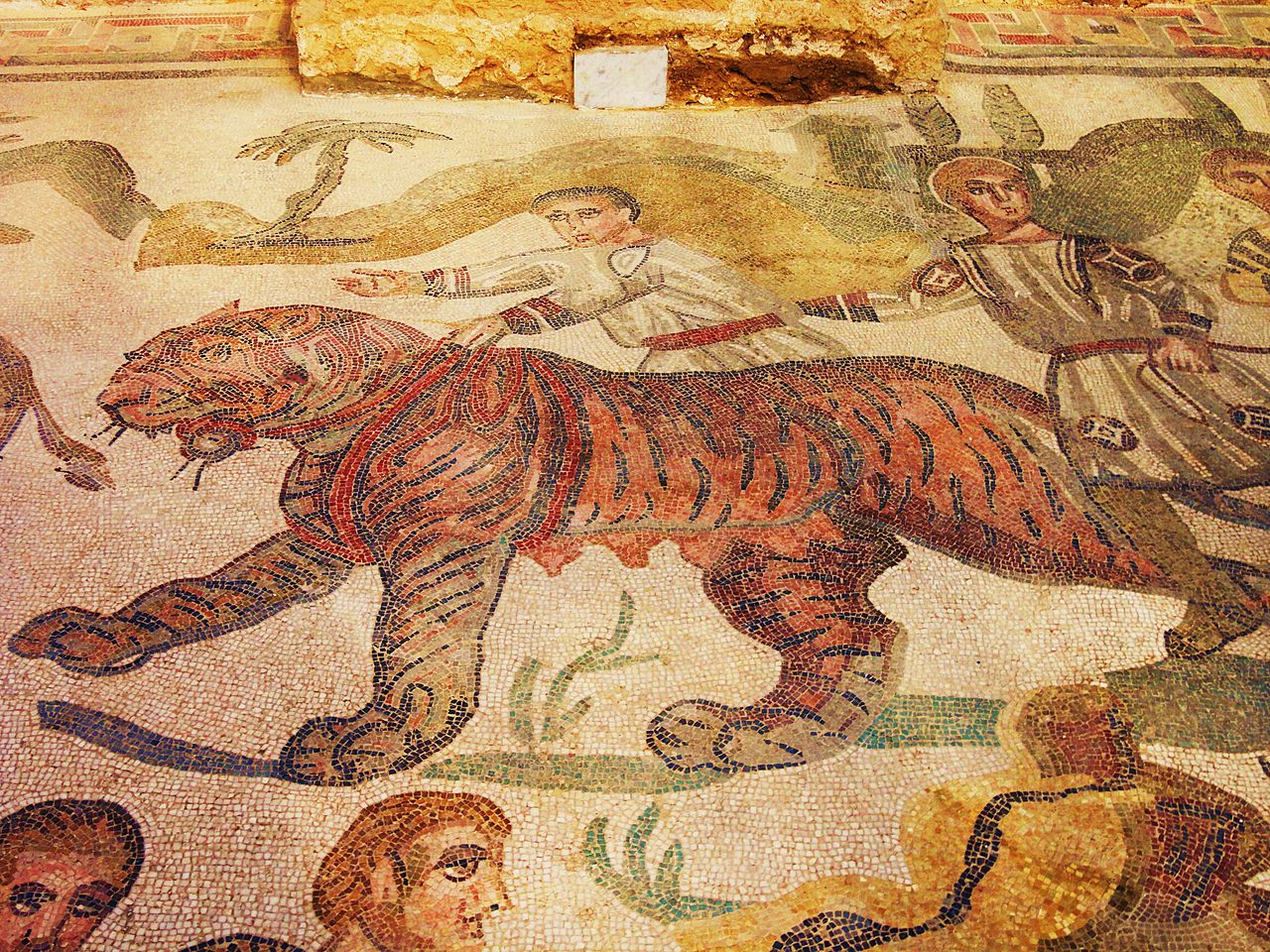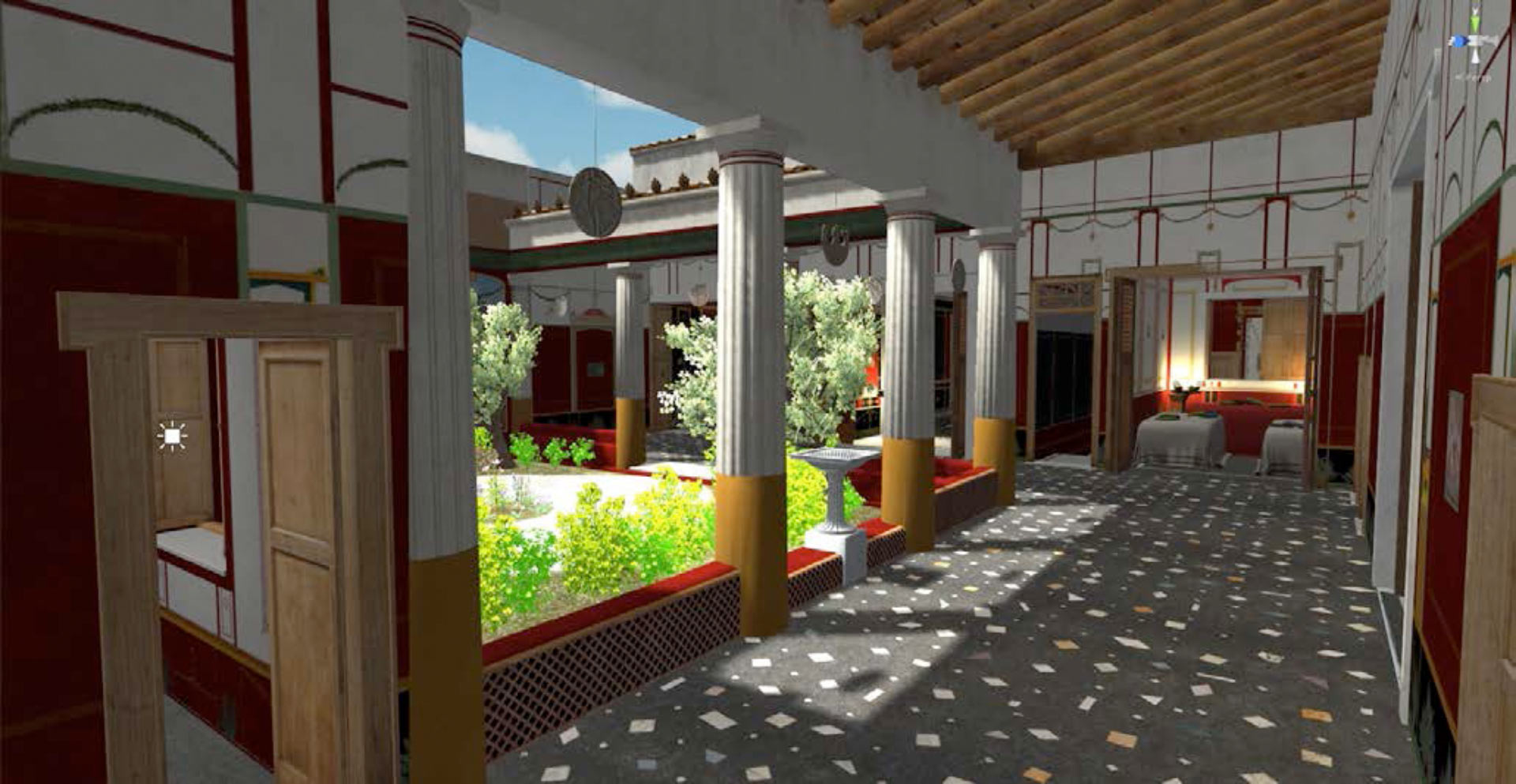Dated between the end of the first and the beginning of the second century AD, it stands in the western area of the ancient city. The monument, whose cavea measures about 98 meters in diameter, is built in opus caementicium with facings in blocks of limestone and brick. The steps and the frons scenae were covered in marble, as well as marble slabs and stuccoes, still partially preserved, decorated the aulae, the two large rooms that, through corridors (parodoi), lead to the orchestra. The cavea, with a semicircular plan, is built on substructures and has three orders: Tuscanic, Ionic and Corinthian. Of these only the lower order is preserved, consisting of twenty-five arches on pillars with Tuscan half-columns.
The arches of the cavea, with a wide finished frame, presented as keystones reliefs configured, represented by busts in the lower order and, most likely, by masks in the upper orders. Some of these masks have been reused in buildings of the Historical Center, where they are still visible. The cavea ended in the upper part with a gallery, in which niches opened.
